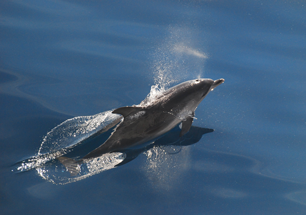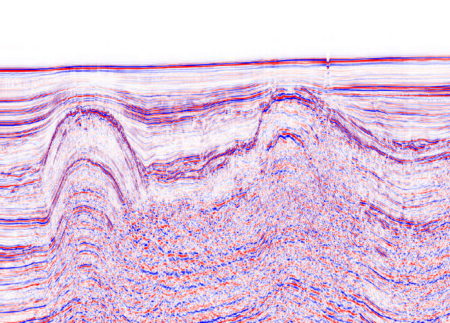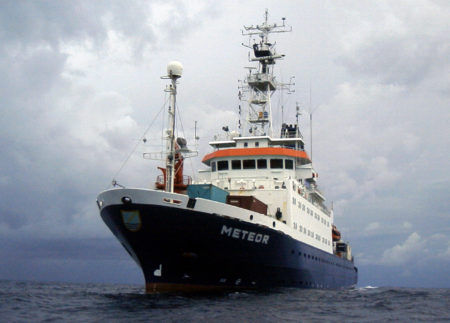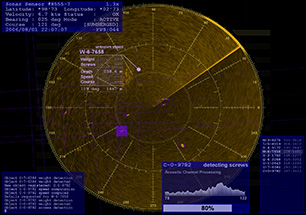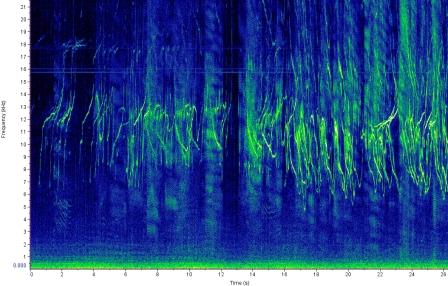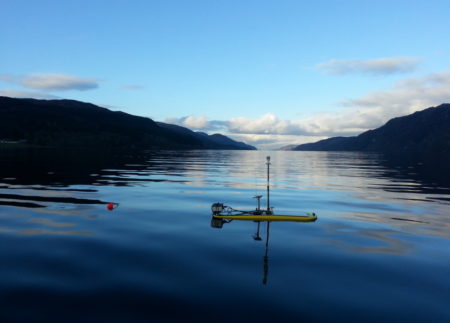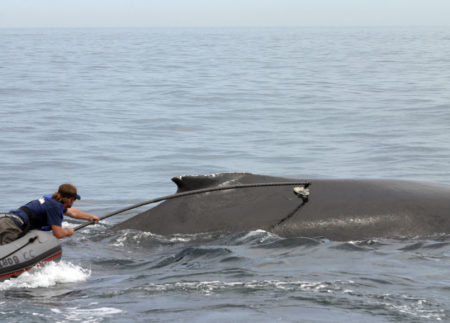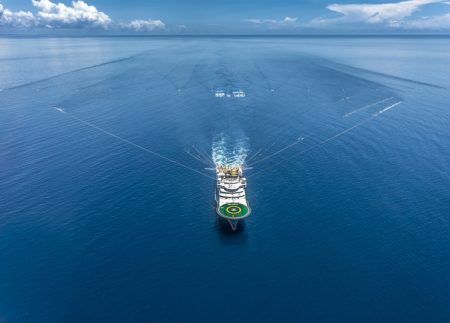Visual detection is of course a useful way to find and track marine animals. But it has obvious limitations at night and in bad weather. Moreover, some animals make long dives, which make them hard to detect at the surface.
Passive acoustic monitoring (PAM) helps detection by picking up the sounds that vocal marine mammals make and trying to track them. Listening to underwater sounds can greatly enhance visual monitoring.
So PAM is a promising tool. But it has yet to live up to initial expectations as a reliable means of monitoring, because overall performance is highly variable. PAM technology has not yet reached its full potential.
PAMGuard is software designed to help you get the best out of PAM. It translates the sounds picked up in the water onto a user interface that’s easy to read.
We believe PAMGuard takes passive acoustic monitoring a step closer to providing what both researchers and the industry need: a useful tool for monitoring marine mammals at sea in poor visibility conditions, shared by a community of users and developers.
Software that’s free and open source
PAMGuard is free and open source. We want everyone to have access to it. In fact, the more that people use it, the better it gets. That’s why the PAMGuard website offers plenty of support, with tutorials for users and detailed developer training notes.
We see a future where a researcher sitting on a boat in the Bering Sea can start writing algorithms for detecting whale calls, then share the work with the research community. Everyone wins from this technology – including the whales.
Such shared creativity can move PAM technology forward in a way that simply can’t happen where source codes are confidential for commercial or other reasons and only a few developers have access.
PAMGuard is transparent. It allows full access to source codes and the assumptions behind them. This will benefit everyone.
PAMGuard can run on your laptop
The industry has invested four years and approximately $3 million in PAMGuard’s development. From the start, we wanted PAMGuard to benefit the marine environment, so we designed it with the research community in mind. We know how useful it would be if data from different activities could be presented in a consistent form that’s easy to compare.
This means PAMGuard needs to work with many different hardware systems. And it does. If you’re working from a small boat with a laptop computer and a single hydrophone, you can still use PAMGuard software. It’s not bundled together with a particular type of hardware for commercial purposes.
Consistency across different hardware
This flexibility means that once you’ve mastered PAMGuard, you can use the same interface again in different situations with different hardware; no more hopping from system to system. PAMGuard’s consistency should mean your experience grows quickly, instead of being spread across a variety of commercial software.
We want to see the widest possible uptake of PAMGuard. The more it’s used, the easier life gets for its users. Everyone benefits from PAMGuard’s consistency.
A familiar look and feel
PAMGuard combines the important strengths of software applications that preceded it, and builds on these strengths. You’ll feel at home with PAMGuard if you’re used to software such as Ishmael or the International Fund for Animal Welfare (IFAW) suite. We’ve kept the familiar look and feel, and the user interface is simple and intuitive. Have a look at it on the PAMGuard website.
Dealing with glitches
Like all new software, PAMGuard has had initial glitches. We’ve completed some critical fixes and PAMGuard’s better than it’s ever been. Of course it’s not perfect, but we believe PAMGuard is the best solution out there for many marine mammal monitoring challenges. And the more people that use it, the better it gets.
Users’ feedback helps to improve PAMGuard. The industry is currently funding basic support, and our researchers work to sort out glitches as soon as we hear about them. We can only fix the things we know about, though. That’s why we really need people to use PAMGuard and provide feedback.
Next steps
We ask you to:
- become familiar with PAMGuard: visit www.pamguard.org, where you can also register for updates
- test PAMGuard alongside your current software
- use PAMGuard where it’s appropriate
- provide feedback on glitches and suggest improvements.
Thank you for reading about PAMGuard. For further details, please email info@soundandmarinelife.org

